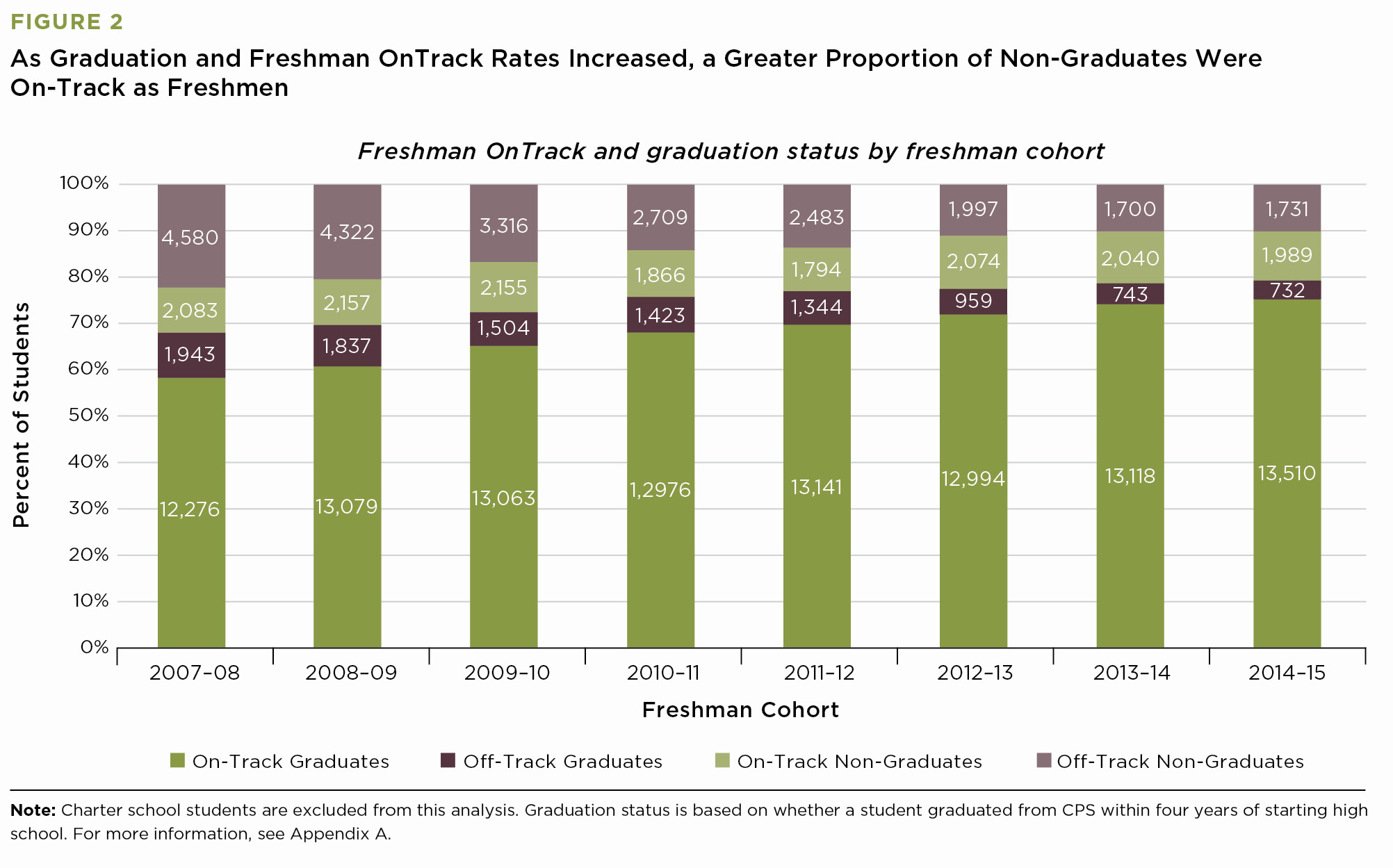1. As Freshman OnTrack rates have improved, how, if at all, has the predictive power of Freshman OnTrack changed?
2. How accurately does Sophomore OnTrack predict high school graduation? What is the relationship between students’ freshman and sophomore year performance?
3. What indicators can sophomore educators use at the beginning of sophomore year to understand the needs of their incoming students?
4. What indicators can sophomore educators use during sophomore year to monitor students’ progress toward high school graduation and post-secondary success?
5. How frequently do students change success categories from freshman to sophomore year of high school, and what are the high school and college outcomes of students in different success categories?
For many students, sophomore year can be a forgotten year, a time sandwiched between high school’s more momentous milestones. As a result, sophomore year lacks a clear identity, but is also well positioned to be a time of intentional development for high school students. The purpose of this report is to help build an organizing purpose for sophomore year by developing a research-based organizing set of indicators for sophomore educators.
Using Freshman OnTrack and more nuanced definitions of freshman success, sophomore educators can better target intervention and support from the beginning of sophomore year; and using similar sophomore success indicators, they can monitor and support students during sophomore year.
Key Findings:
- Sophomore year presents educators with an additional opportunity to identify and intervene with students who need more support.
- For students who were off-track during freshman year, sophomore year can be an opportunity to recover. For some students who were on-track during freshman year, especially those with any Fs or low attendance, sophomore year is a critical year on the path to high school graduation.
- Freshman year remains the most critical year in students’ educational trajectories, and even with rising Freshman OnTrack rates, the Freshman OnTrack metric remains predictive of high school graduation.
- Educators can monitor more subtle warning indicators, including low attendance rates and all course failures, to provide support to a wider group of students in need.
- Freshmen and sophomores with strong grades but low attendance are in danger of not graduating, and need additional monitoring and support.
- Applying these findings to sophomore year will require intentional shifts and work on the part of central office, networks, and schools.


